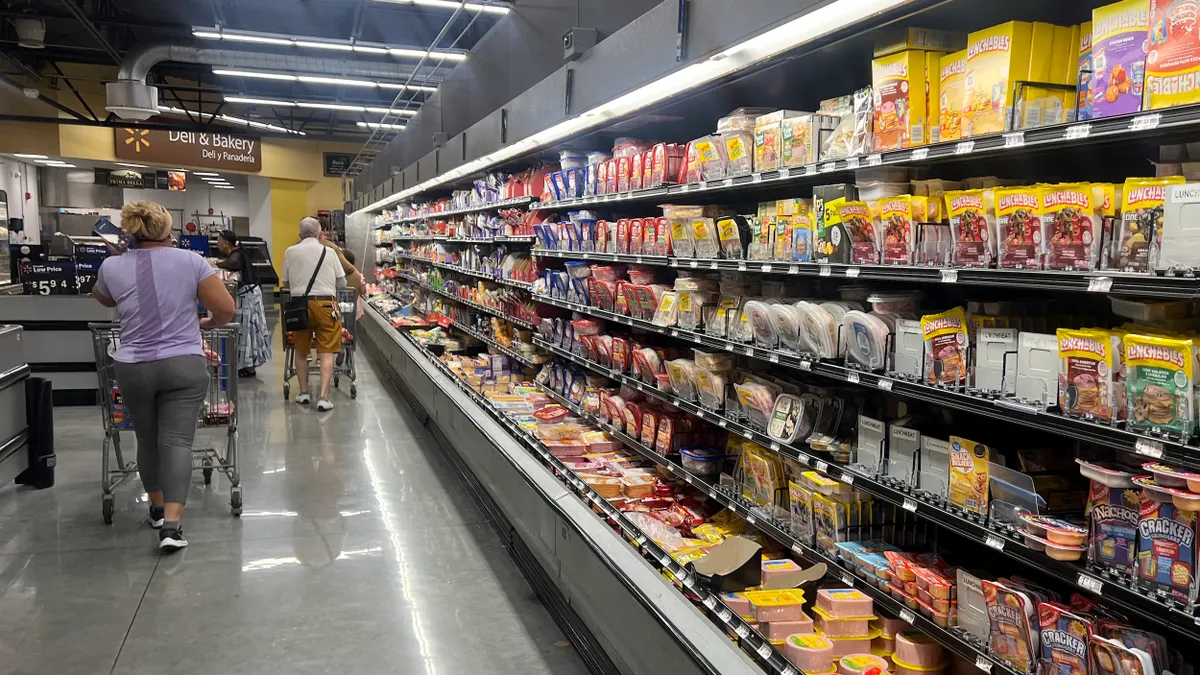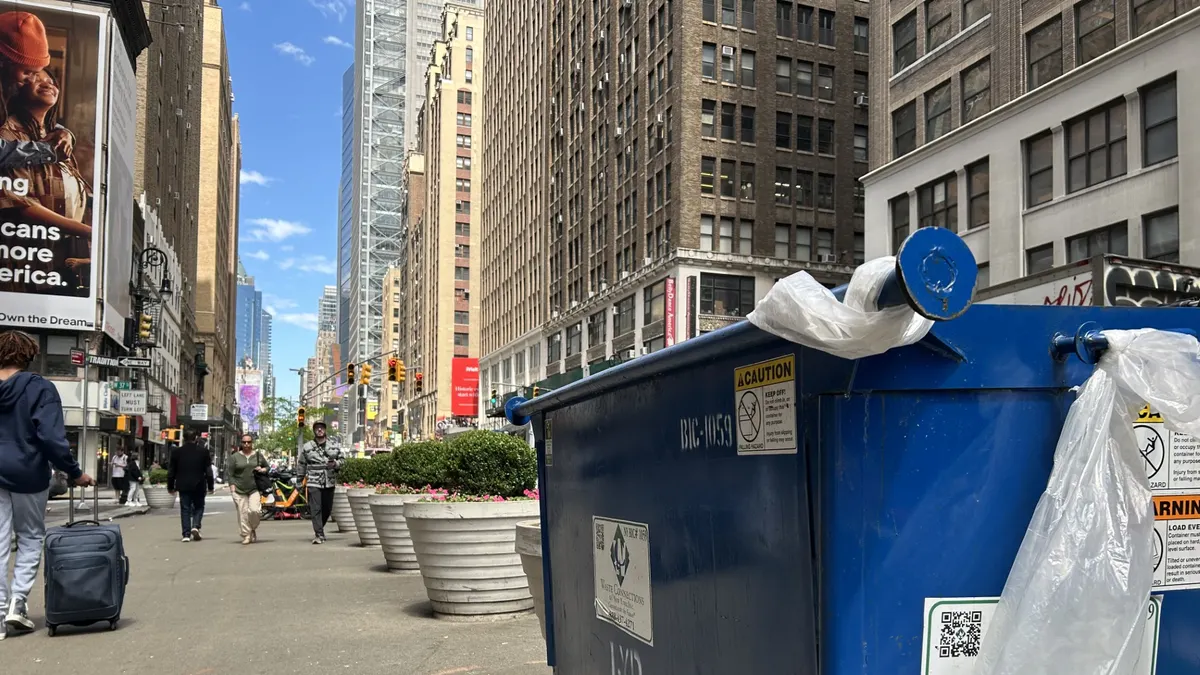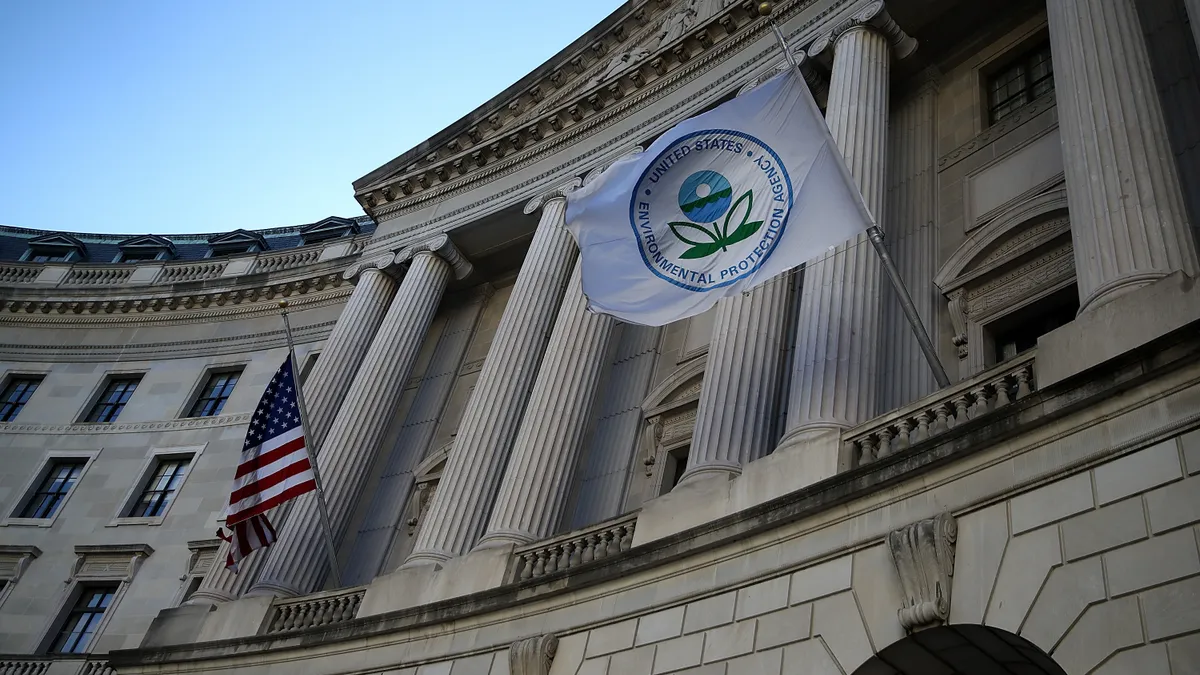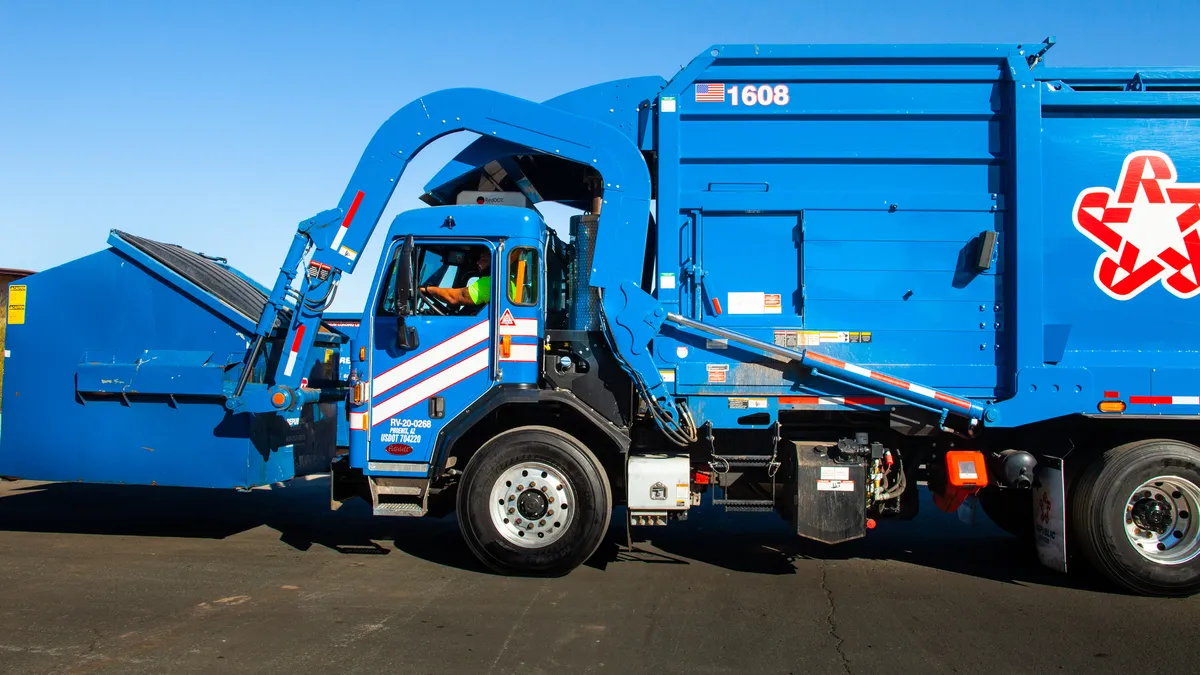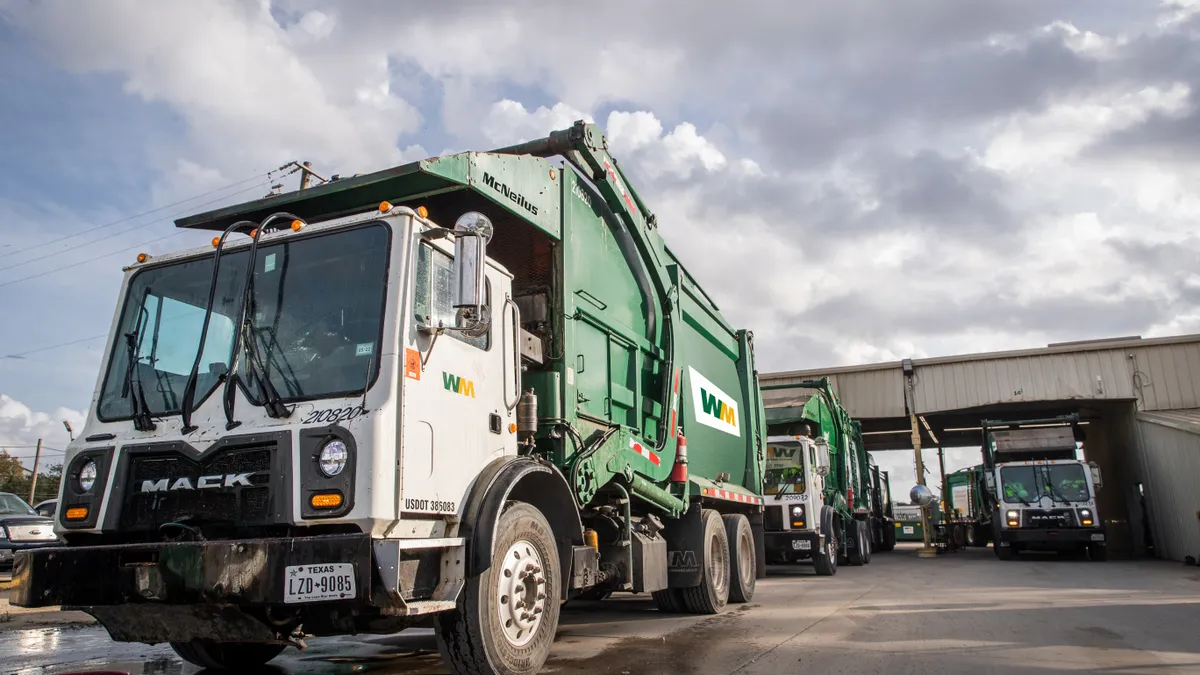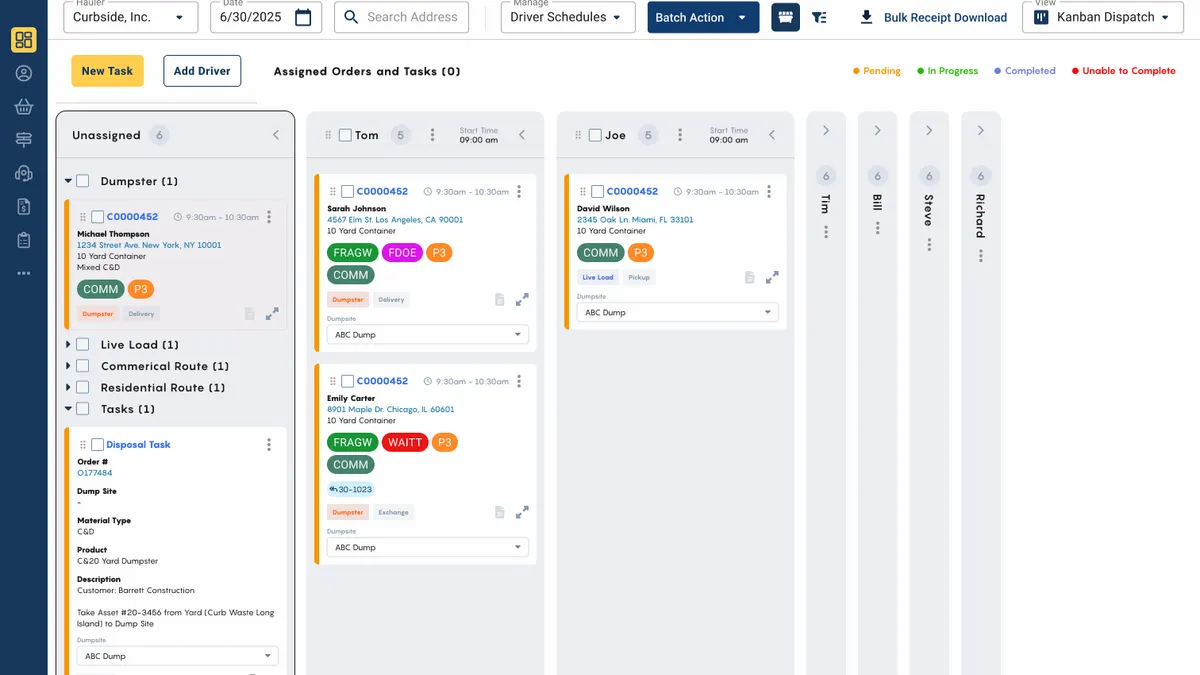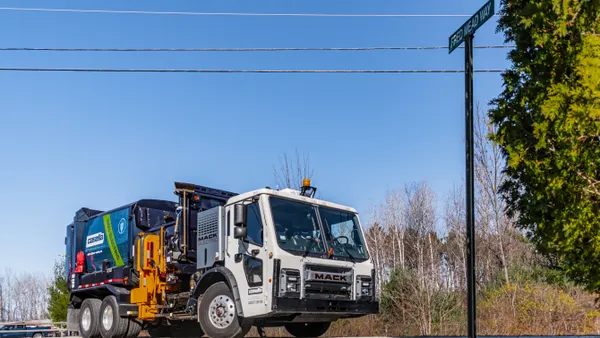The confetti's all swept up, the influx of holiday waste handled. Now, it's time to look ahead at what's sure to be a fascinating year.
Normally, this would be our moment to highlight prognostications about what 2019 may have in store for the waste and recycling industry — and we can think of plenty to say on the now perennial topics of international trade policy, infrastructure, technology, regulatory trends and beyond.
Instead, we're trying something new. Below are some of the top questions that will guide Waste Dive's coverage in 2019. This list isn't meant to be exhaustive – and we'll react to any surprise developments as usual – but these are all key areas in which you can expect to see us deliver fresh, independent reporting throughout the year.
What will it take to stabilize U.S. recycling programs, and who gets to define success?
If 2018 was the year of post-China disruption, then 2019 could be the year U.S. recycling evolves into an even more circular system, with less reliance on foreign export markets.
While a broad spectrum of the overall scrap trade remains healthy, the same can't be said for some of its proportionally smaller (but often most visible) aspects. Recycling certain fiber grades from residential programs will remain a challenge until new domestic mill capacity comes online. Public scrutiny on plastic has brought environmental groups renewed hope for passing extended producer responsibility policies or outright bans. Glass continues to be a casualty of rising recycling costs in multiple areas, despite its disconnect from international markets.
Amid these shifts, governments are struggling to show progress on sustainability goals. Many of the recycling industry's biggest companies are pushing for rate increases or new contract terms, and the lack of a national regulatory structure has resulted in a patchwork of different approaches. Between tracking hyperlocal effects, talking with a broad range of stakeholders and sharing conference highlights, Waste Dive has been working hard to sort out where it's all heading.
The need for more collaborative forward momentum was recognized in last fall's EPA Recycling Summit. This year, we'll be focusing on the four key areas highlighted in that summit's voluntary pledge: commodity market shifts, public education challenges, aging infrastructure and inconsistent measurement standards. We'll remain ever-curious about whether all this newfound attention will result in tangible changes, and who will ultimately be the arbiters of what those changes should be.
What is the waste and recycling sector's role in the climate crisis?
It has become increasingly clear how little time is left to even incrementally improve a bleak global forecast. Waste issues don't often rise to the top of those discussions, despite leading circular economy thinkers and academics indicating that they should.
It's also now common to see climate change appear as a broad justification for local recycling programs, corporate sustainability goals and other initiatives. Even among governments or service providers that prefer more oblique language, the need for meaningful progress has become undeniable following a string of devastating weather events.
In these uncertain times, sustainable materials management frameworks are starting to gain traction over traditional weight- or cost-based metrics. The prospect of "full-cost accounting" for disposal sites, or possibly even a carbon tax system, could further change the equation.
All of this points to the necessity of fundamentally reconsidering what gets recycled — particularly food waste. However, with both composters and landfill operators pitching their services as viable forms of carbon sequestration, it can often feel like the messages are conflicting. We look forward to taking a thorough look at the science behind these claims and exploring the U.S. industry's role in adapting to perhaps the most pressing global issue of our time.
Are landfills regional assets, anachronistic solutions or something else entirely?
By now, the dominance of landfills in the U.S. is taken for granted. Ever since the Resource Conservation and Recovery Act established new standards more than 40 years ago, thousands of unprotected sites have been closed, and those that remain operate under much tighter regulations. Compared to open dump sites in other countries, our national network is truly modern and efficient.
When managed effectively, these sites can be long-lasting and lucrative assets for their owners. However, multiple executives from some of the largest landfill owner/operators have also told Waste Dive it has become inarguably tougher to run landfills, especially near more populated areas. Regulatory requirements, community host fees and potential legal payouts have all increased in recent years.
As expansions become harder in certain regions, material is expected to travel farther and farther. At the same time, many other regions still have abundant capacity, and the nation at large could subsist on this for decades to come. But at what cost?
In 2019, Waste Dive will be taking a fresh look at the complex factors around technological advancements, emerging contaminants, pending regulations, post-closure surprises and community relations — questions that have long received too little attention.
Is 2019 the year landfill alternatives gain new traction?
The odds are always steep for new concepts, but if all goes according to plan, there will be multiple facilities opening up this year that don't fit the traditional mold of source-separation, burying or burning. Some technologies may have already been implemented in the U.S. or abroad, but all are attracting notable attention for the new commitment behind them.
This month, RePower South is expected to fire up up a long-dormant mixed waste MRF in Montgomery, Alabama. Fed by an expanding network of customers, BioHiTech Global will begin operations of its first "high efficiency mechanical and biological treatment process" facility in West Virginia during the first quarter of this year. Up in northern Maine, Fiberight is slated to open a mechanical biological treatment facility by April. Enerkem, already operational in Canada, is on the lookout for new opportunities in multiple U.S. states. And a number of other companies are also expected to continue working on previously announced projects or attempting to find a home for their first iterations.
At the same time, the list of U.S. mass burn WTE facilities continues to shrink through attrition and has attracted renewed attention from activist groups hoping to accelerate that process. Despite these efforts, Covanta has been performing well through diversification, and Wheelabrator proved attractive enough for Macquarie Infrastructure Partners to purchase it (due in part to UK projects) last fall.
Regardless of varying opinions on the necessity or viability of these non-landfill facilities, the perceived need for them won't go away unless product design, reduction, reuse and recycling programs can ever fully align into "zero waste" harmony. Given that this is unlikely to happen anywhere in the near term, we expect to see many more such ideas arise in the years to come.
What more can be done to ensure all industry careers are as safe, lucrative and upwardly mobile as possible?
Any of the industry's leading figures will likely tell you, safety is among their top priorities. The latest Bureau of Labor Statistics report showed that waste and recycling collection remained the fifth most fatal occupation for 2017, with multiple deaths reported in other industry titles. Injury rates for the year held steady, aside from a still unexplained spike among MRF workers.
Advancements in technology, ongoing public education and new legislation are all key components for changing this dynamic — but are they enough? And beyond making industry jobs safer, employers of all types have also been forced to get more creative about recruitment and retention efforts in the face of low unemployment rates, uncertain immigration policies and generational shifts.
While the waste and recycling industry may not be the right fit for everyone, those that take to it have the potential to find good, long-lasting careers — except for when those jobs are faced with unexpected complications. In addition to following the crucial issues around contract negotiations, wage disputes and safety records, we'll also be looking for new insights on how to make the industry's workforce more resilient and diverse for future generations.
How much bigger can the agglomerates get in this current economy?
2018 was a big one for industry consolidation. GFL bought Waste Industries, which itself picked up Alpine Waste & Recycling earlier in the year. Waste Connections bought American Disposal Services. Many others reported tuck-ins big and small. And while it may seem like consolidation has reached once unforeseen heights, some believe it can go even further considering the remaining number of privately owned local and regional haulers.
Given the lingering sense that corporate tax cuts might become a target if the Republicans lose power in Washington, D.C. come 2021 (among other factors), similar activity may continue into 2019. Industry analysts and executives alike also remain bullish on the potential for ongoing price and volume increases — a sign that business is still booming. At the same time, economists have begun warning of a new economic downturn; analysts asked about this during the latest round of earnings calls, and while executives maintained that they were better-positioned than the last time, it's still possible that a big enough dip could hit home.
The mood in next month's Q4/annual earnings calls will be very telling, along with comments at upcoming conferences. As more economic indicators trickle in, 2020 political activity ramps up and new deals are struck, we'll be watching with great interest to see how the industry's biggest players attempt to solidify their power amid these shifts. We'll also be keeping an eye on the rumored IPOs, growing private companies, would-be U.S. players and still-nascent entrants that aim to change the equation.
If you have thoughts on this list, or want to share your own questions for us to consider pursuing, please email waste.dive.editors@industrydive.com and we may include them in a future round-up.





